Nano drone swarms, bioluminescent plants and screens merged into building materials are among the lighting technologies that could soon transform the urban nightscape, according to the creator of a new virtual reality experience in London.
The Third Age of Light at London’s Royal Society of Arts invites visitors to don a VR headset and experience how the capital’s public realm could look after dark in the near future.
The environments cover three virtual areas, at South Bank, King’s Cross and Primrose Hill and were devised by lighting design studio Speirs + Major to showcase the potential impact of artificial intelligence, biotech, information technology and other forms of privately-controlled illumination.
The studio suggests that traditional displays could be replaced by “smart dust” nano LED technology, comprising a network of tiny devices equipped with wireless electromechanical sensors, making it possible to merge screens into almost any surface.
Developments in algorithms and small autonomous aerial devices could replace traditional street lighting with “swarms of light” that dynamically and instantaneously change the location and patterns of light sources.
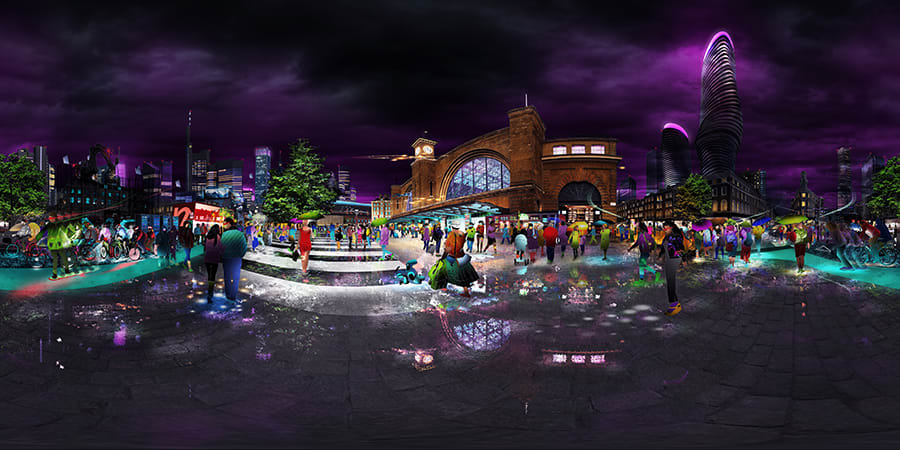
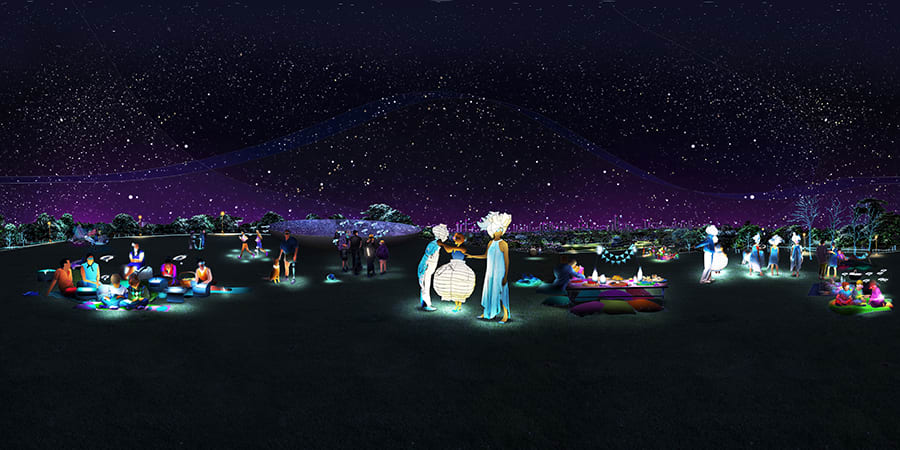
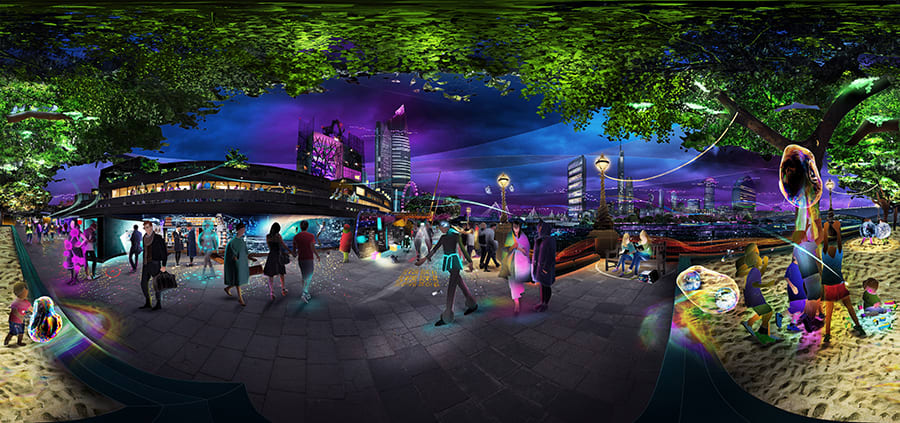
The virtual environments cover King’s Cross (top), Primrose Hill (centre) and South Bank (above)
Mark Major, director of Speirs + Major, told BIM+: “Intel has already used drones as an alternative to fireworks by creating fantastic programmable displays. If that exists now, what will it be like in the future when robotics are a lot smaller, more controllable and AI can be used to control different aspects?”
Clouds of aerial micro-bots could provide temporary illumination for large gatherings, offer additional safety and security, or convey information or indicate directions for pedestrians.
New ideas about how light is used will impact on everything from the night-time economy to inner city food production. Current LED lighting technology enables crop growth in underground urban farms, the most cost-effective wavelengths being in the blue, red and far-red wavelengths. The predicted scaling up of urban farming raises the possibility that purple light will become a dominant colour in the nightscape.
Advances in bio-engineered plants, grasses, fungi and algae could in the near future provide supplementary street lighting without the need for electricity. Major comments: “We’re not going to see glowing trees tomorrow, but start-ups are approaching the point where they can provide basic bioluminescent lights on a commercial basis. Other forms of light could be off grid or not ‘artificial’ light sources in the traditional sense.”
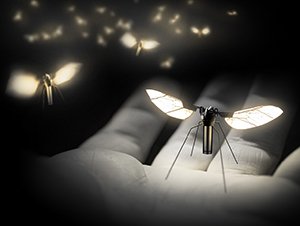
Nanobots could be used to merge screens on to any surface
More intricate control systems, developed in line with the vision of the smart city, could make lighting more responsive and adaptable in future.
“Control systems are the hidden technology with the most potential. It will be possible to control light in response to the volume of people in an area, or to illuminate an area when there is an incident on the street. This type of technology is already in the process of being procured and installed in various cities around the UK and abroad,” says Major.
Artificial light could be controlled by algorithms to make it as dynamic as natural light, able to create different atmospheres and moods to meet different functions and operational demands in the same way as we already do inside buildings.
As well as technological innovations, The Third Age of Light explores questions about lighting’s social role, its potential support for the night-time economy, more sustainable approaches and to improve accessibility and wayfinding etc.
Emerging lighting technology holds huge promise, but intelligent design will also be required to prevent it from damaging the experience of the urban environment.
Major comments: “Our cities could become blighted by an over provision of visual information at night. Architects, lighting designers and others working in the field will have to make sensible decisions about how much, when and where to deploy it. A free-for-all on our visual environment would be awful, we should embrace the technology, but also think about how best to use it,” he concludes.
The experience can be accessed Monday – Friday 8:30am – 9:00pm at RSA House in London.
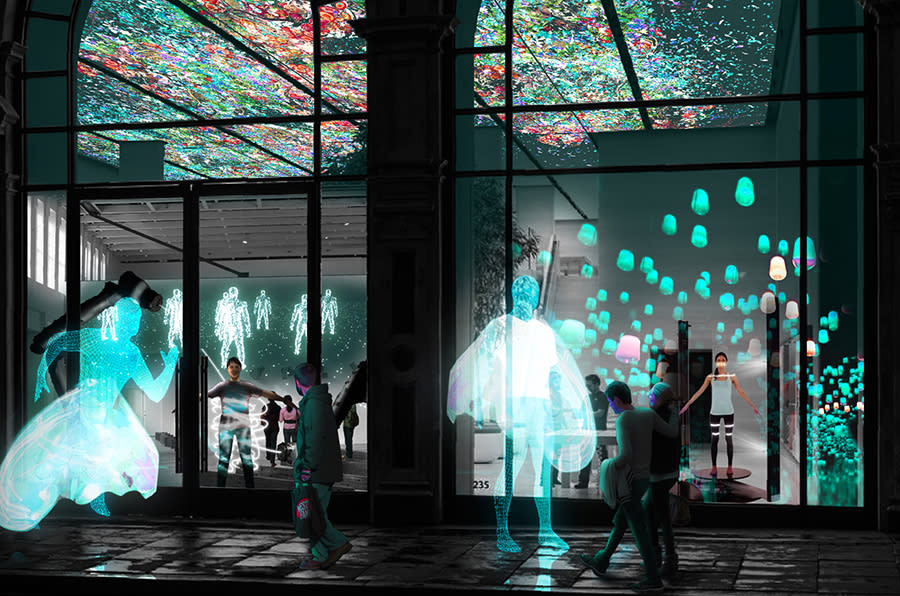
Shopping will be a different experience













